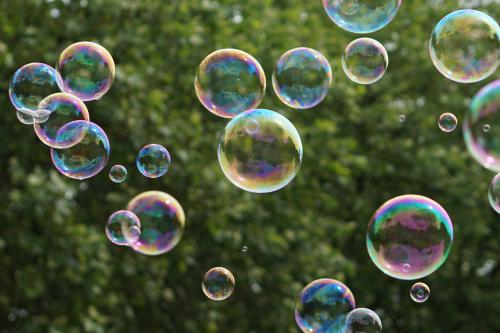Explore the world like a scientist
Families can support learning about science with hands-on activities.

Exploring the world like a scientist is exciting for children. Our children want to know the “how’s” and “why’s” of everything, and they want to check it out for themselves using all of their senses. A child’s natural curiosity motivates them to learn about the world and how the different parts of their world interact. It’s easy to explore like a scientist if you provide opportunities and give them support.
When we use the term “science,” many parents think of books full of detailed facts like we read in school or perhaps a few flashy demonstrations we have seen. Science for children is a lot more involved than just reading or viewing.
Children want to do hands-on learning, which means they want to explore, discover, investigate and use materials. They learn by using their senses of touch, hearing, sight, smell and even taste. They do this to find out how things are structured or what they can do.
Teaching and learning experts agree this is valuable for children. According to the National Science Teachers Association (NSTA) Position Statement on Early Childhood Science Education, “NSTA recognizes the importance of exploratory play and other forms of active engagement for younger children…as they come to explore and understand the world around them.”
Science exploration activities teach children important skills such as problem-solving, creative thinking and critical thinking. These cognitive skills will be important to them in all walks of life and will enable them to be more successful in a variety of areas.
The “Bouncing Bubbles Experiment” by the Spangler Science Club can be a fun science activity for the entire family. You will need some distilled water, dish soap, a little glycerin and a pair of clean, inexpensive gloves.
 Using a bubble wand or pipette, blow a bubble and let children watch it and try to touch it. When they touch the bubble, it is likely to break. Blow several bubbles and ask kids why they think the bubbles keep popping. Ask them if they think they could bounce a bubble in their hands and let them try. After a minute or so, give each child a clean glove or even a new sock to put on their hand and try the activity again. This time, the bubble won’t pop and they can even try to bounce it.
Using a bubble wand or pipette, blow a bubble and let children watch it and try to touch it. When they touch the bubble, it is likely to break. Blow several bubbles and ask kids why they think the bubbles keep popping. Ask them if they think they could bounce a bubble in their hands and let them try. After a minute or so, give each child a clean glove or even a new sock to put on their hand and try the activity again. This time, the bubble won’t pop and they can even try to bounce it.
Once everyone has had a chance to try it and has been successful in bouncing a bubble, ask children what they think made the difference. Try the activity again using a dirty sock. What happens? Ask them if they have any other ideas of things bubbles might bounce on.
After lots of exploration and discussion about your findings, you’ll find that dirt and oil are actually what break the surface of the bubble and cause it to break. By using the clean glove or sock, the bubble is not as likely to break. By the same token, any surface that is greasy or dirty will most surely cause the bubble to pop by breaking its surface.
In order for activities like this to provide valuable learning experiences for children, adults have important roles to play. Adults need to help create the opportunity, assure a safe environment, manage materials, encourage youth to try and challenge their thinking.
Ask open-ended questions, which encourage children to think and discover on their own, and listen to what they say. Good open-ended questions will begin with something like, “I wonder why…,” “What do you think would happen if…” and “What else do you think might work?”
Michigan State University Extension stresses that while special activities you share with your children are great, you don’t have to create an event to explore like a scientist. Anytime children ask why or how something happens, it is an opportunity to practice problem-solving, predicting and investigating. Giving young children the chance to explore will help send them on an educational journey that never ends.



 Print
Print Email
Email


